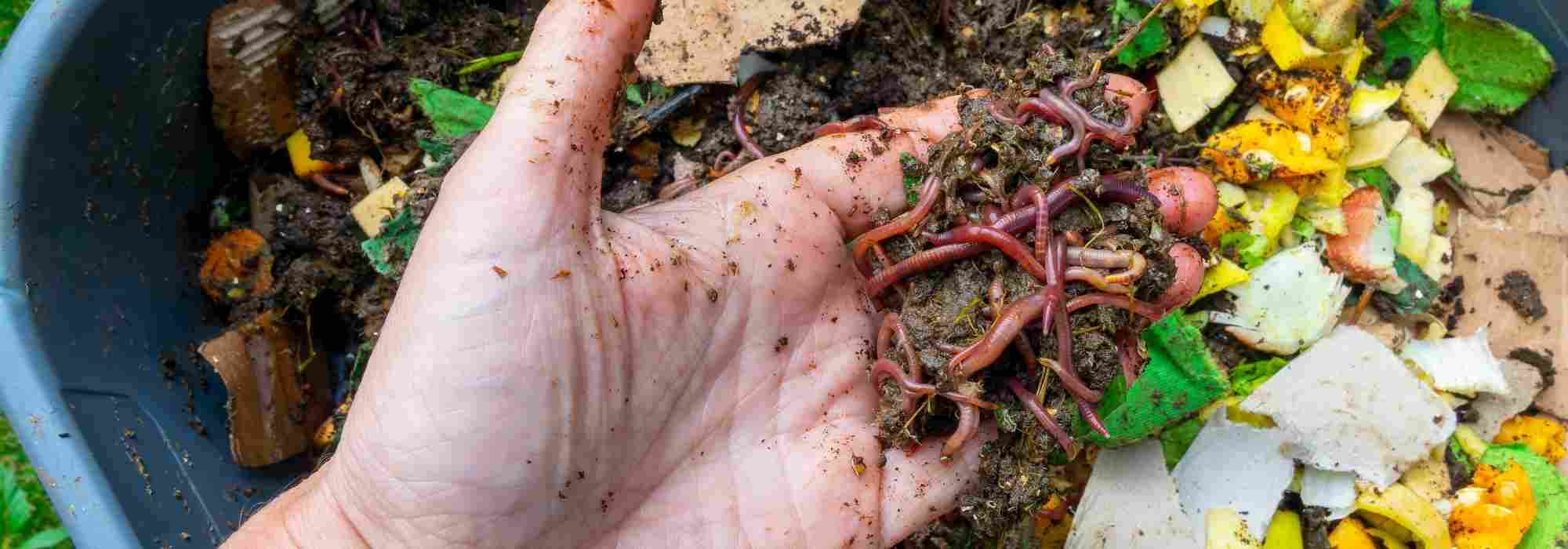
Compost Insects: Those to Welcome and Those to Control
Let's explore all the insects, both beneficial and less desirable, that live in the compost bin
Contents
A compost heap is teeming with bustling activity, as it’s a rich and living medium that evolves with the seasons and the addition of organic matter. First, there are nearly invisible microorganisms, such as thermophilic bacteria that break down the cell of materials to feed on their sugars, and fungi that digest the cell of leaf and wood. And then there’s a whole host of insects, more or less visible, that play an essential role within the compost pile, along with some rather undesirable insects.
Let’s explore together all the insects that inhabit your compost, to understand their function and learn how to preserve (or deter) them.
What are the functions of compost insects?
A well-managed compost with a balanced mix of dry materials (browns) and moist materials (greens) is a living medium. Beneath the surface of decomposing waste, a multitude of insects are busy at work, sometimes invisible to the naked eye, yet fundamentally revealing. These arthropods, beetles, flies and other myriapods are not there by chance: they settle because the medium is favourable to them and organic cycles are underway.
In this warm and humid microcosm, insects play a crucial role. Some break down coarse matter, others actively participate in plant decomposition, or regulate fungal populations. As for their droppings, they naturally enrich the compost, as they are rich in nutrients. Others, predators or scavengers, control the proliferation of competing or opportunistic species. This diversity of actors is a guarantee of stability: the richer the compost ecosystem, the more capable it is of absorbing variations in temperature, humidity or input composition. 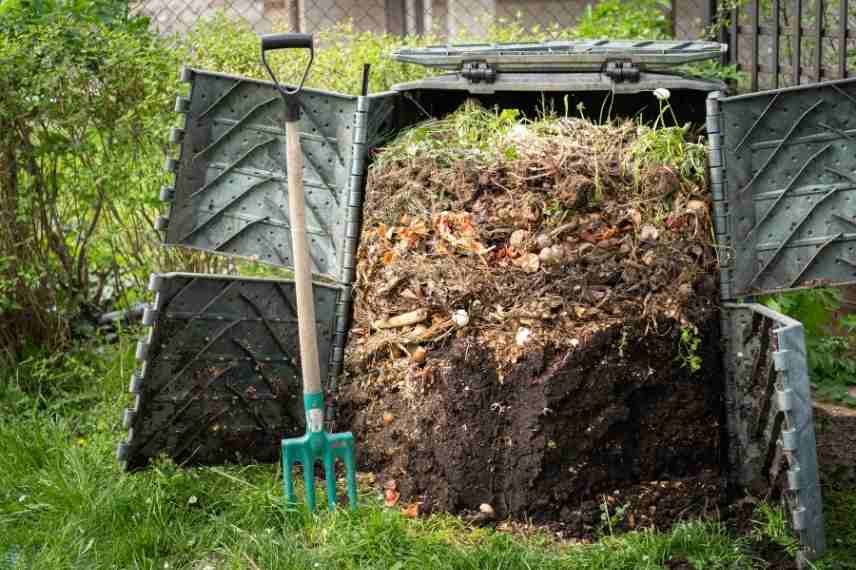
Identifying the insects that inhabit compost helps assess its health and balance. Thus, an overpopulation of fly and midge larvae indicates a certain imbalance. On the other hand, the presence of woodlice or beetles tells us about the good aeration of the compost.
Beneficial Insects in Compost to Preserve
Among the diversity of insects that inhabit an active compost heap, some play an essential role in transforming raw matter into humus. These insects should be preserved and encouraged by maintaining a medium conducive to their development. Here is an inventory of these useful little creatures:
Epigeous Earthworms (Eisenia fetida or Eisenia andrei)
These are earthworms, quite different from garden earthworms, which adapt perfectly to compost bins because they excel at transforming fresh, tender, and moist organic matter. Sometimes called manure worms, these are thin red worms with a hearty appetite, capable of consuming their own weight in a single day. Like their soil-aerating cousins, these epigeous worms help mix the compost.
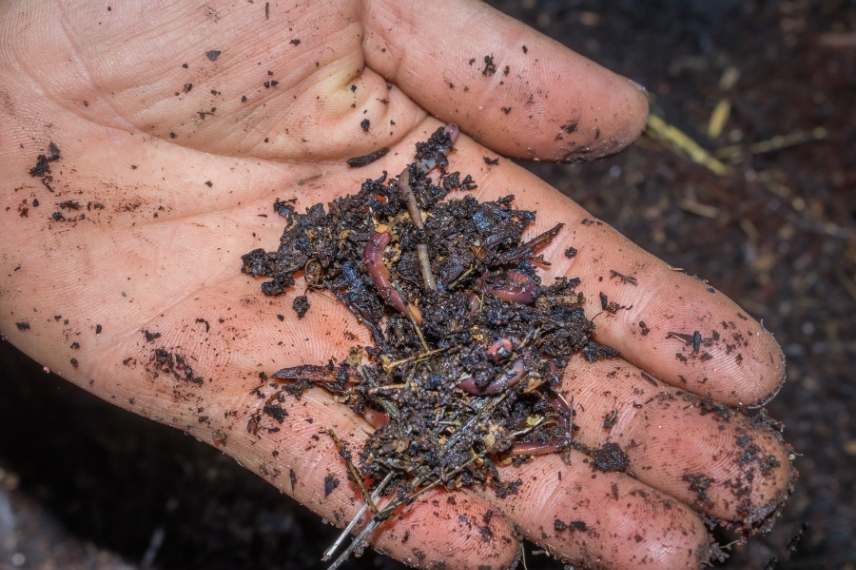
Epigeous compost worms
These worms live on the soil surface or in compost heaps if the temperature is between 15 and 25°C.
Woodlice
Although not true insects but terrestrial crustaceans, they still deserve a mention. Indeed, woodlice play a crucial role in breaking down woody matter rich in cellulose. They are often the first “insects” spotted in compost, as they target waste in the early stages of decomposition.
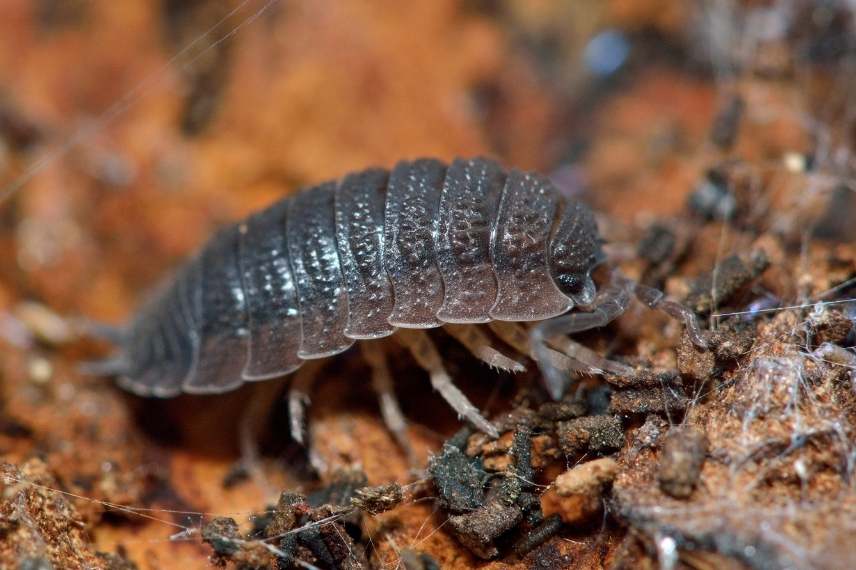
A compost woodlouse (Porcellio scaber)
Their mechanical action breaks down tough matter and speeds up colonisation by fungi and bacteria. Woodlice have a hard shell and often seek out the coolest corners of the compost.
Springtails
Long considered primitive insects, springtails are now classified as arthropods that feed on decomposing plant matter and microorganisms like fungi and bacteria. They help regulate populations of other organisms while accelerating the overall composting process.
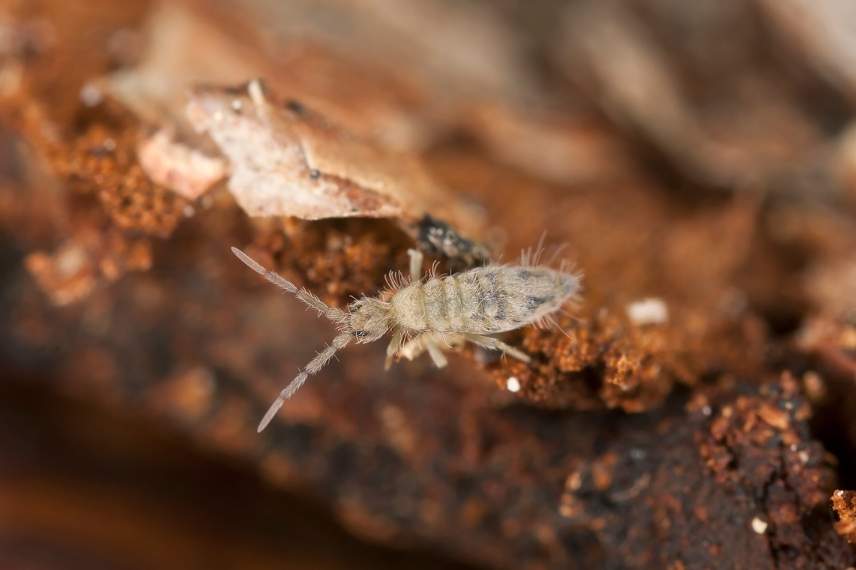
Springtails
These are jumping “insects,” usually whitish and 2–3 mm long—practically invisible.
Beetles
The main beetles found in compost bins are rose chafers, ground beetles, and rove beetles. The smallest rove beetle species are detritivores, breaking down dead organic matter and feeding on fungi. Larger ones are predators, feeding on larvae or gastropods that could disrupt compost balance. Ground beetles and their larvae play a similar regulatory role. Their occasional presence is nothing to worry about.
As for rose chafers, beautiful iridescent green scarabs, they readily lay eggs in compost. Their larvae are highly beneficial—plump, brown-headed grubs with swollen greyish-white abdomens that take three years to develop. When emptying a compost bin, it’s crucial to return any larvae found to the heap. 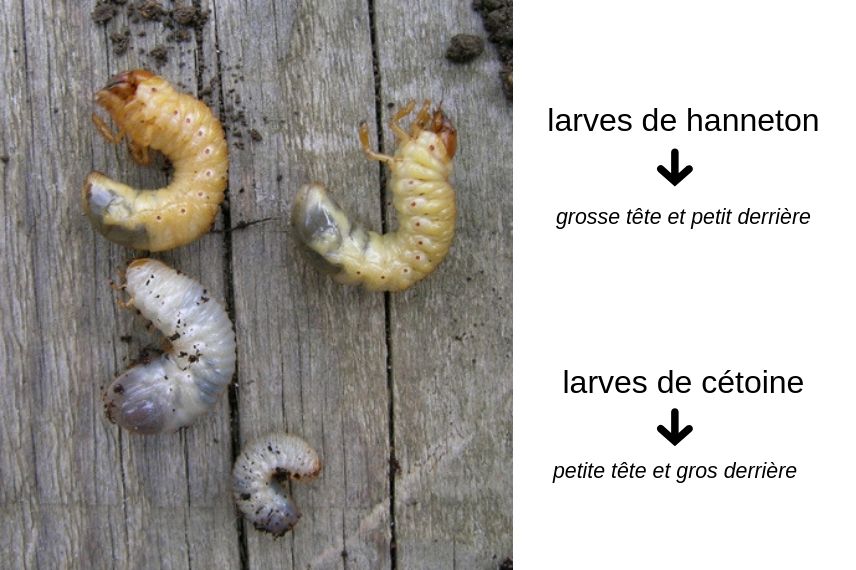
These larvae feed on woody matter and decomposing organic material, turning it into humus. Unlike cockchafer or cutworm larvae (often confused with them), they never attack plant roots. However, in a balanced compost, they shouldn’t overpopulate, as they may compete with epigeous worms.
Further reading: Rose Chafer vs. Cockchafer Larvae: What’s the Difference?
Millipedes
Often more discreet, millipedes—particularly common species like julids and lithobiids—excel at shredding woody residues overlooked by epigeous worms. Highly active in middle layers, they’re especially useful when compost contains perennial prunings, wood chips, or tough stems. They’re fleetingly glimpsed, moving remarkably fast.
Earwigs
Also known as forficulids, earwigs play a secondary yet necessary role. These opportunistic omnivores, mostly nocturnal, inhabit damp, decaying areas sheltered from light. They feed on softened plant debris, dead insects, and occasionally mould. Their presence indicates compost balance but shouldn’t be excessive.
Black Soldier Fly Larvae (Hermetia illucens)
These larvae are exceptionally voracious, favouring nitrogen-rich waste like peelings and ripe fruit. Their presence in compost is generally beneficial, especially in warm regions or highly active summer composters. They deter houseflies by preventing females from laying eggs.
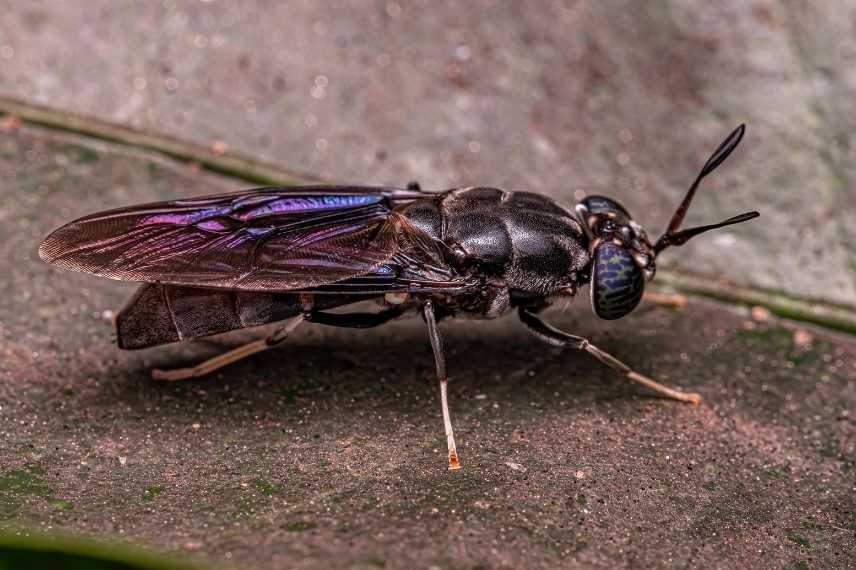
The black soldier fly
They’re powerful organic decomposers, highly effective for wet organic waste—if managed correctly. Some even sell black soldier fly larvae as compost accelerators.
White Worms
In deeper, moist but well-aerated zones, enchytraeids—tiny translucent white worms a few millimetres long—complement earthworms’ work. They consume humifying matter and stimulate microbial activity. Abundance signals advanced, odourless decomposition—ready for mature compost.
Insects to watch out for in compost
A living compost cannot be free from unwanted insects, but their proliferation is never harmless. It always reveals an imbalance in the composition or functioning of the compost heap: an excess, a deficiency or a malfunction.
- Housefly or manure fly larvae often appear in composts that are too rich in nitrogenous or wet waste, which ferment slowly. Their presence is also a sign of poorly aerated compost and indicates partial anaerobiosis. A blanket bog of dry material (dead leaves, shredded material, cardboard) or immediate turning of additions usually helps to regulate their presence
- Fruit flies or vinegar flies indicate poor surface management, as they lay eggs in decomposing fruit or sweet peelings left exposed. These sweet wastes should therefore be incorporated under a dry layer
- Ants become a sign of dryness if they settle permanently in the compost. They dig tunnels to escape moisture, and their massive presence is usually linked to a lack of water or an excess of brown material.
- Certain wood-boring beetles or weevils may appear in composts rich in fragmented wood, particularly in bins containing hedge prunings, shredded material or branches. Proliferation indicates too slow degradation of the woody fraction, which must be compensated by adding nitrogenous materials. Their presence may be undesirable in wooden garden sheds or firewood piles
- Wasps may establish their nest in compost, as they are attracted by sweet or protein-rich materials from meat scraps mistakenly thrown into the composter. They may also find small larvae there. Their presence, though impressive, is not directly harmful to the compost. They do not damage structures or beneficial fauna, but they can become very annoying for the user.
- Subscribe!
- Contents
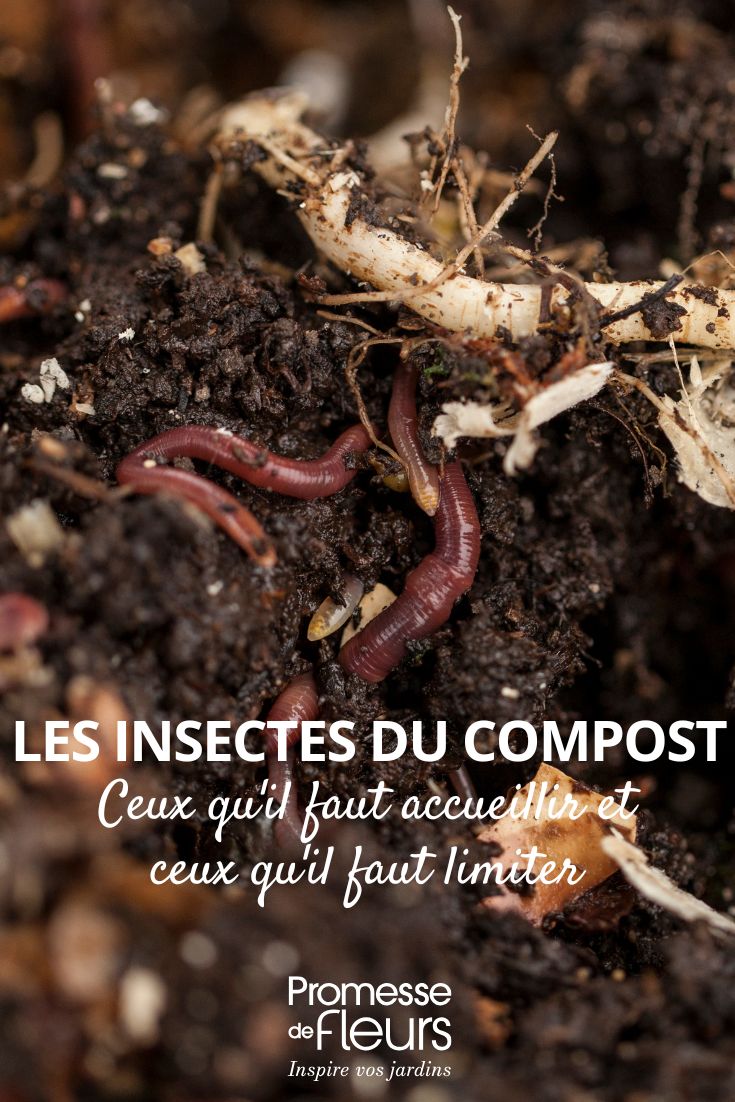































Comments